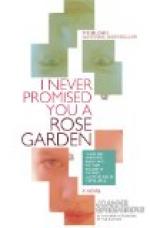But this is the time and hour that one gardener, on a very modest scale, may be excused if she overrates the charms of rose possessing, for it is a June morning, both bright and overcast by turns. A wood thrush is practising his arpegios in the little cedar copse on one side, and a catbird is hurling every sort of vocal challenge and bedevilment from his ancestral syringa bush on the other, and all between is a gap filled with a vista of rose-bushes—not marshalled in a garden together, but scattered here, there, and everywhere that a good exposure and deep foothold could be found.
As far as the arrangement of my roses is concerned, “do as I say, not as I do” is a most convenient motto. I have tried to formalize my roses these ten years past, but how can I, for my yellow brier (Harrison’s) has followed its own sweet will so long that it makes almost a hedge. The Madame Plantiers of mother’s garden are stalwart shrubs, like many other nameless bushes collected from old gardens hereabout, one declining so persistently to be uprooted from a particularly cheerful corner that it finds itself in the modern company of Japanese iris, and inadvertently sheds its petals to make rose-water of the birds’ bath.
An English sweetbrier of delicious leafage hobnobs with honeysuckle and clematis on one of the wren arbours, while a great nameless bush of exquisite blush buds, quite destitute of thorns (one of the many cuttings sent “the Doctor’s wife” in the long ago), stands an unconscious chaperone between Marshall P. Wilder and Mrs. John Lang.
I must at once confess that it is much better to keep the roses apart in long borders of a kind than to scatter them at random. By so doing the plants can be easily reached from either side, more care being taken not to overshadow the dwarf varieties by the more vigorous.
Lavinia Cortright has left the old-fashioned June roses that belonged to her garden where they were, but is now gathering the new hybrids after the manner of Evan’s little plan. In this way, without venturing into roses from a collector’s standpoint, she can have representatives of the best groups and a continuous supply of buds of some sort both outdoors and for the house from the first week in June until winter.
To begin with, roses need plenty of air. This does not mean that they flourish in a draught made by the rushing of north or east wind between buildings or down a cut or roadway. If roses are set in a mixed border, the tendency is inevitably to crowd or flank them by some succulent annual that overgrows the limit we mentally set for it, thereby stopping the circulation of air about the rose roots, and lo! the harm is done!
If you want good roses, you must be content to see a little bare, brown earth between the bushes, only allowing a narrow outside border of pansies, the horned bedding violets (cornuta), or some equally compact and clean-growing flower. To plant anything thickly between the roses themselves prevents stirring the soil and the necessary seasonal mulchings, for if the ground-covering plants flourish you will dislike to disturb them.




